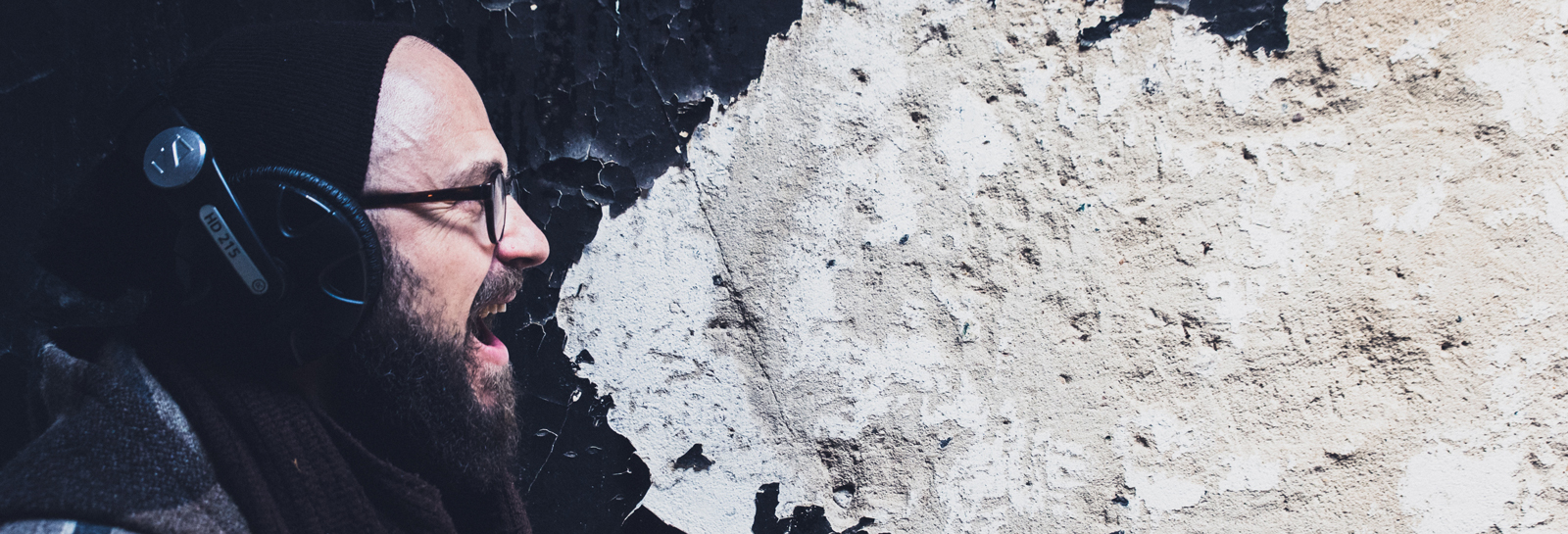How to Write for the Human Ear

Share this story
Use these three tips to write text that rolls off the tongue for podcasts and audio.
My love for audio storytelling grew on Saturday afternoons during my childhood. With the radio tuned to WBEZ Chicago, I’d listen religiously to This American Life. I became hooked on compelling stories from across the country. Ira Glass’ narration sounded off the cuff and effortless. I felt like I was part of the conversation.
That conversational intimacy of audio has helped podcasts explode in recent years, with shows adopting emotional, narrative structures to create those driveway moments when you simply don’t want to stop listening. But successful podcasts aren’t the result of sitting in front of a mic and chatting away. In fact, a lot of work goes into creating storytelling that feels effortless and authentic.
The key? Strong writing adapted for the medium of audio. If you’re used to writing for print, the shift to podcast scripting can be a challenge. Here are three ways to write for the ear:
1. Keep sentences short and punchy
Think Hemingway, not Faulkner. Not only will you conserve oxygen when recording the voiceover, but you’ll also strike a warm, conversational tone. Short sentences can even take the form of fragments. Often, what looks flat and even childlike on the page sounds rich and organic when spoken aloud.
Short sentences also maintain listener engagement with the material. Unlike print, audio zips by at a set pace. Listeners can’t easily slow down or rewind what they’re hearing, so short sentences are key to guiding them through the podcast episode at a rate they can absorb the information.
When in doubt, read the work aloud. Are you stumbling over dependent clauses? Tripping over alliteration? Becoming short of breath? It’s time to rewrite. NPR’s training guide is a great resource to help writers navigate the new landscape of podcast scripting, with examples of how a single story can look dramatically different in a print article versus in a radio script.
2. Explore different types of storytelling
Don’t become wedded to a chronological narrative structure or a straightforward Q&A format. Podcasts are a relatively new medium, and now’s the time to innovate and experiment.
Independent producer and podcast host Rob Rosenthal describes the “e” story structure. Here’s the breakdown: Open with an interesting moment from the middle of the narrative. Then, jump back to the beginning and travel through the story chronologically, reuniting with the opening scene and pushing through to the conclusion. It’s a simple structure that can hook readers into a narrative and keep them engaged through the outro.
Compelling story structures exist everywhere, so seek inspiration from books, movies and other podcasts. Morning Edition host Steve Inskeep even developed tips for effective audio storytelling based on lessons from the genius song lyrics of Ray Charles, Bruce Springsteen and Steve Earle.
3. Put voiceover and quotes to work
Podcast listeners expect to be informed—and entertained. Voiceover can provide the factual information, whereas the interview tape can impart color, reflection and opinion. But first you need to find the parts of the recording that contain them. Because the interview transcript won’t capture emotion and emphasis, be sure to listen to the audio during the scripting process. Doing so also provides the opportunity to discover useful nonverbal interview tape, such as laughter, which can reinforce the authenticity of an interview.
By putting extra care toward transitions between the narration and quotes, the podcast can seamlessly flow from one idea to the next. Try starting a sentence and letting the interviewee finish it, or use the tease and back-ID method to introduce a speaker.
Writing in and out of the interview tape isn’t always easy, but by writing for the ear and learning from other producers’ examples, this seemingly subtle change can make all the difference in story flow. Together, the voiceover and interview audio collaborate to communicate the podcast’s message.


